Deserter’s Songs The Apocalyptic Landscapes of Godspeed You! Black Emepror
Deserter's Songs, Music & Dance, New in Ceasefire - Posted on Saturday, November 20, 2010 10:23 - 3 Comments
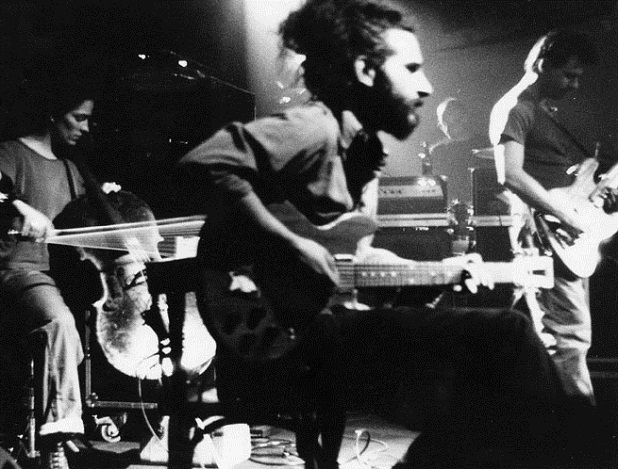
alt=”” width=”618″ height=”309″ />By David Bell
Next month sees the much anticipated return of Godspeed You! Black Emperor- one of the most vital and thrilling bands of late nineties and early naughties. Despite (or perhaps because of) being instrumental, their music seems to capture the horrific desolation of the political situation far better than any other, offering a perfect soundtrack to the US’ imperial ambitions and the spaces of apocalypse that threaten to overwhelm us if we allow war, capitalism and climate change to continue to pose a threat to our survival.
What’s so effective about Godspeed’s music, I think, is that it seems to root these political issues in geographical spaces. I’ve always felt there’s a strong tie to landscapes in their music, perhaps stemming from the influence of Ennio Morricone’s spaghetti western soundtracks on their work (the films, of course, had an incredibly strong sense of place)- and their music seems inextricably bound up with the landscapes of the neoliberal order. In this week’s column I want to consider this relationship by relating Godspeed’s music to three landscapes, each of which might be considered apocalyptic in its own way.
Landscape One: Titterstone Clee Hill
The smaller of the two Clee Hills, Titterstone Clee is set in attractive Shropshire countryside and overlooks the town of Ludlow. It’s often shunned by walkers in favour of Shropshire’s more ‘attractive’ hills: The Wrekin, the Long Mynd and Wenlock Edge, an unpopularity almost certainly due in part to the scars of its industrial heritage.

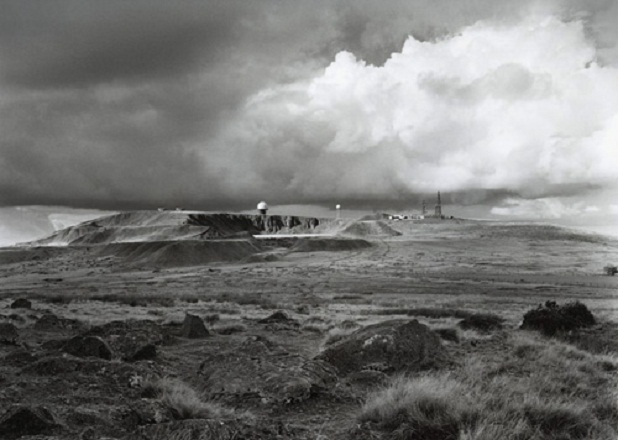
Used for quarrying for many centuries, parts of the hill look as alien as any moonscape- and this is punctuated by the occasional burned-out car and the remnants of the railway and industrial buildings that once stood on its slopes.
And then there’s the golf ball radar domes and the antennae of Britain’s air traffic control services- forbidding looking pieces of technology which silently co-ordinate that great enabler of globalisation: the aeroplane.
The resonance here is perhaps a personal one- I find that the landscape of Titterstone Clee moves me intensely, and in a similar way that the music of Godspeed does.
Both are incredibly beautiful, but they’re also unsettling- harrowing, even.
They reminds us how fragile life is: on Tittersone Clee the ghosts of industry are all that keep the lonely walker company on most days, and when there I can imagine radio static drifting through the lonely air (the Kremlin Inn on the slope of the hill is so named because it could pick up Soviet radio during the Cold War); crackling like some of the more abstract, musique-concrete influenced sections of Godspeed’s work.
And though they’re primarily used for civilian aircraft, it’s not too much of an imaginative leap to think that the radar domes might be used to co-ordinate global warfare.
(The above photographs are taken from Simon Dennison’s book Quarry Land, which I highly reccommend).
Landscape Two: The Road
Godspeed’s music is often referred to as being ‘apocalyptic’, and reviewers frequently liken it to the soundtrack of an imaginary film. Indeed, Danny Boyle used a section from their track East Hastings to accompany the opening scene in 28 Days Later, where the film’s protagonist staggers around an abandoned London (sadly, I can’t find this online). And amateur and short film makers have spotted this too, using Godspeed’s music to soundtrack videos of abandoned spaces in the contemporary world.
I offer here three films with Godspeed music used in this way: one shot in Six Flags Amusement Park abandoned after Hurricane Katrina (particularly pertinent given that GY!BE’s ‘Sleep’ features the voice of an old man reminiscing about the glory days of Coney Island and its theme park) and two in the city of Pripiat, abandoned after the Chernobyl disaster:
Godspeed’s music also resonates superbly with the post-apocalyptic landscapes of Cormac McCarthy’s The Road (and John Hillcoat’s film adaptation)- a tale set in a United States decimated by a catastrophe of enormous proportions (it’s never made clear whether nuclear war or climate change is to blame).
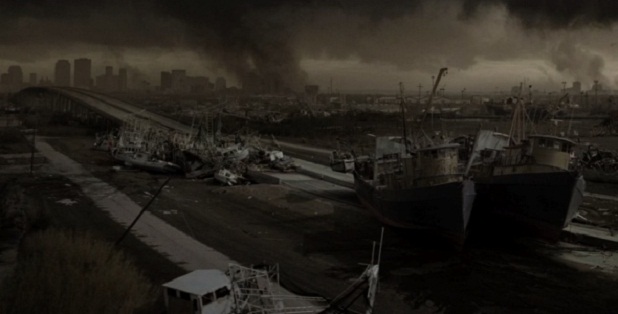
There is, of course, a strange beauty in these visions- something mirrored in the famous monologue which opens Godspeed’s debut album F#A#∞ (a section of which once adorned the cover of NME, along with Mel C!):
“the buildings tumbled in on themselves
mothers clutching babies picked through the rubble
and pulled out their hair
the skyline was beautiful on fire
all twisted metal stretching upwards
everything washed in a thin orange haze
i said: “kiss me, you’re beautiful –
these are truly the last days”
you grabbed my hand and we fell into it
like a daydream or a fever”
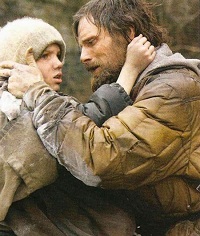 In the presence of the ‘beautiful’ person the monologue is aimed at- and in the daydream, Godspeed offer the listener a faint glimpse of hope.
In the presence of the ‘beautiful’ person the monologue is aimed at- and in the daydream, Godspeed offer the listener a faint glimpse of hope.
The apocalypse may be strangely beautiful, but through solidarity we can pull through and build something on the other side (something I wrote about in an earlier column in relation to Silver Mt.Zion, Godspeed’s ‘sister act’).
This may be a faint hope, but it’s a hope all the same. It’s also a central theme in The Road where the man’s relationship with his son offers a positive vision of humanity in extreme circumstances.
Landscape Three: Occupied Millbank
It will take more than family relationships to get us out of the mess we’re in now of course, and along with many others on the left I was delighted to see resistance finally kick in in Britain with the occupation of Millbank at the protest against increasing student fees. Whilst Adam over at Rouges Foam has offered a far more pertinent analysis of the role of music in the current situation (and in the demonstration itself) than I ever could, I want to reflect on how the music of Godspeed can resonate with the destruction of property (note: not violence) last week.
I’m referring here to the frenzied climaxes in Godspeed’s music- what casual listeners often refer to as ‘the interesting bits’ (I prefer the phrase ‘immediately obvious bits’). Because boy, can Godspeed do frenzied climaxes (as evidence I offer you the climax up to 8:27 into Moya and from 8:40-9:04 in Static).
Now of course I’m taking advantage of the ‘blank canvas’ nature of instrumental music a little bit here, but it’s not too much of a stretch of the imagination to see this music born out of the same rage as that which manifested itself in the occupation of Tory HQ- a rage that we need to harness if we are to make a better world.
This is Bakunin’s ‘urge to destroy’ that is also a creative urge, or the ‘scream’ John Holloway speaks of: a scream against ‘mutilation of human lives by capitalism, a scream of sadness, a scream of horror, a scream of anger, a scream of refusal’, but also a utopian ‘scream to break windows… a refusal to be contained, an overflowing, a going beyond the pale, beyond the bounds of polite society’. A scream, in other words, to bring about a better way of living.
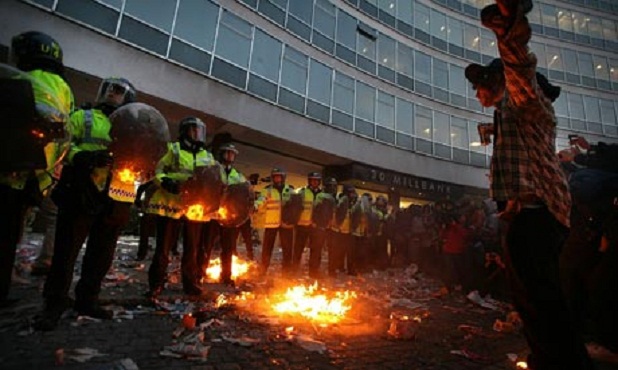
Just so long as I can still listen to Godspeed You! Black Emperor when we get there.
David Bell is a doctoral candidate in the Department of Politics and International Relations at the University of Nottingham. His work seeks to rethink utopianism through the work of Gilles Deleuze and anarchist thought. He is currently writing a book on the politics of improvising music for Zer0 Books. Deserter’s Song, his column on music, is published every Saturday.
3 Comments
Maku
David
i remember thinking when it happened what change could occur if the anger required to cause the occupation of the tory hq could be uitlised . And as a person living in the UK and more accurately living in england i can say that anger is definitely felt by a great deal of people both young, middle aged and old.
comprar gafas progresivas…
[…]Deserter’s Songs The Apocalyptic Landscapes of Godspeed You! Black Emepror | Ceasefire Magazine[…]…


interesting article, saw them last month at Troxy (great gig and venue!), check the trailer for the film Budrus, they use Godspeed, a good use for a tense political landscape:
http://www.youtube.com/watch?v=CJkPVAcXq1Y